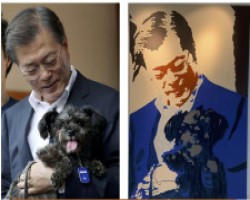Discover the Hidden Meanings Behind These 40 Company Logos
Uncover the intriguing stories and symbolism behind 40 well-known company logos. This exploration reveals the hidden meanings and creative choices that make these logos memorable and impactful. Dive into the fascinating world of branding and design with this insightful analysis.

Understanding the stories and meanings behind company logos can be fascinating. Logos are more than just symbols; they often carry hidden messages and cultural references that reflect the company’s values, mission, and identity. In this article, we'll explore the hidden meanings behind 40 well-known company logos. From iconic tech giants to popular consumer brands, each logo has a unique story to tell.
Apple: A Bite of Innovation
The Apple logo, featuring a bitten apple, is one of the most recognizable symbols in the world. The bite in the apple serves several purposes. Firstly, it distinguishes the apple from other round fruits, ensuring clarity in its design. Secondly, it symbolizes knowledge and learning, referencing the biblical story of Adam and Eve. The clean and simple design aligns with Apple's philosophy of minimalism and user-friendly technology.
Nike: The Swoosh of Motion
Nike's swoosh logo, designed by Carolyn Davidson, represents the wing of the Greek goddess Nike, who personified victory. The swoosh embodies movement and speed, fitting perfectly with Nike’s branding as a sportswear company. It signifies the empowerment and drive that the brand wants to impart to its customers.
Amazon: The Smile That Delivers
Amazon's logo features a smile that stretches from A to Z. This design element signifies that Amazon offers everything from A to Z, emphasizing the company's vast product range. The smile also represents customer satisfaction and the company’s commitment to delivering happiness.
FedEx: The Arrow of Precision
FedEx's logo is renowned for its clever use of negative space, with an arrow subtly embedded between the letters "E" and "X". This arrow symbolizes speed, precision, and forward motion, reflecting FedEx's commitment to timely and accurate deliveries.
BMW: The Roundel of Excellence
The BMW logo, often misinterpreted as a spinning propeller, actually represents the brand's heritage in aviation. The blue and white colors reflect the colors of the Bavarian flag, emphasizing BMW’s German roots and commitment to excellence in engineering.
McDonald's: The Golden Arches of Happiness
The iconic golden arches of McDonald's are designed to resemble the letter "M". They symbolize the company’s global presence and its mission to provide a consistent and enjoyable fast-food experience. The bright yellow color is intended to evoke feelings of warmth and happiness.
Pepsi: The Global Globe
Pepsi's logo features a circle divided into red, white, and blue segments, resembling a globe. This design represents Pepsi’s global reach and its aspiration to be a refreshing choice for consumers around the world. The white wave in the logo adds a sense of dynamism and energy.
Google: The Colorful Simplicity
Google’s logo uses a simple, colorful design that represents the company’s commitment to innovation and diversity. The primary colors used—blue, red, yellow, and green—reflect the brand’s playful and approachable nature. The use of different colors for each letter highlights Google’s versatility and creativity.
Mercedes-Benz: The Star of Luxury
The Mercedes-Benz logo features a three-pointed star, symbolizing the brand's dominance in land, sea, and air transportation. The star represents the company’s commitment to quality and luxury, positioning itself as a leader in the automotive industry.
Twitter: The Bird of Freedom
Twitter's logo, known as the Twitter bird, represents freedom and the idea of spreading messages quickly and freely. The bird’s upward direction symbolizes progress and the constant flow of information in the digital age. It reflects the platform's role as a tool for communication and expression.
Starbucks: The Siren's Call
The Starbucks logo features a twin-tailed siren, an ancient symbol of the sea. This design choice reflects Starbucks' origins as a coffeehouse inspired by maritime trade. The siren symbolizes allure and the inviting nature of Starbucks’ coffee, drawing customers in with its enchanting aroma and taste.
Intel: The Inside Story
Intel’s logo, with the tagline "Intel Inside," highlights the brand’s presence in the heart of computing technology. The logo’s design emphasizes reliability and innovation, with the "Intel Inside" phrase suggesting that the company’s processors are central to the technology powering modern devices.
Volkswagen: The People's Car
Volkswagen’s logo, featuring the interlocking "V" and "W," signifies the brand’s dedication to creating high-quality vehicles for the masses. The simplicity of the design reflects Volkswagen's philosophy of straightforward, reliable engineering accessible to everyone.
Adobe: The Creative Mark
Adobe’s logo, featuring a stylized "A," represents the brand's focus on creativity and design. The angular shape of the "A" reflects Adobe's innovative approach to digital solutions, catering to the needs of creative professionals and enthusiasts.
Shell: The Iconic Shell
Shell's logo, featuring a scallop shell, symbolizes the company’s origins in the oil industry. The bright red and yellow colors represent energy and vitality, aligning with Shell’s global presence and its role in providing energy solutions.
Chanel: The Interlocking C's
The Chanel logo, with its interlocking "C"s, represents elegance and luxury. The simple yet sophisticated design reflects the brand's commitment to timeless fashion and high-quality craftsmanship. The interlocking "C"s symbolize unity and the seamless integration of style and substance.
Pringles: The Poppy Potato
Pringles' logo, featuring the face of the "Pringles Man," reflects the brand’s playful and unique approach to snack foods. The mustached character embodies the fun and enjoyment associated with eating Pringles, enhancing the brand's appeal to a broad audience.
Sony: The Classic Typeface
Sony’s logo uses a classic serif typeface to convey a sense of reliability and sophistication. The simplicity of the design reflects the company’s focus on high-quality electronics and its commitment to delivering premium products to consumers.
Toyota: The Symbol of Reliability
Toyota's logo features overlapping ellipses, symbolizing the brand's commitment to quality and reliability. The design reflects Toyota’s dedication to innovation and its role in bringing people together through dependable and efficient vehicles.
UPS: The Shield of Trust
UPS’s logo, featuring a shield with the UPS initials, symbolizes trust and security. The shield represents the company’s long-standing commitment to reliable package delivery, while the brown and yellow color scheme reflects UPS’s heritage and reliability.
Audi: The Four Rings of Unity
Audi’s logo, consisting of four interlocking rings, represents the four founding companies of Auto Union. The design symbolizes unity and collaboration, reflecting Audi’s commitment to high-quality engineering and innovation in the automotive industry.
Lacoste: The Iconic Crocodile
The Lacoste logo, featuring a crocodile, symbolizes the brand’s origins and its commitment to elegance and style. The crocodile represents the strength and durability of Lacoste’s apparel, while also evoking a sense of classic sophistication.
eBay: The Colorful Embrace
eBay’s logo uses a colorful and dynamic design to reflect the diversity of products available on its platform. The vibrant colors represent the wide range of items and the energetic spirit of eBay’s online marketplace.
Pizza Hut: The Roof of Flavor
Pizza Hut’s logo features a red roof, symbolizing the company’s commitment to providing a warm and welcoming dining experience. The roof design also reflects the brand’s roots in traditional pizza-making and its dedication to delivering quality and taste.
Red Bull: The Charging Bulls
Red Bull’s logo, featuring two charging bulls, represents energy and strength. The design reflects the brand’s focus on providing a powerful and invigorating beverage, aimed at energizing and motivating its consumers.
Porsche: The Crest of Performance
Porsche’s logo, featuring a horse and a crest, symbolizes the brand’s heritage and commitment to high-performance engineering. The design reflects Porsche’s dedication to producing luxurious and high-quality sports cars.
Skype: The Speech Bubble
Skype’s logo, featuring a speech bubble with the brand’s name, reflects the company’s focus on communication and connectivity. The design emphasizes Skype’s role in facilitating conversations and staying connected with friends and family.
Lego: The Building Blocks
Lego’s logo, featuring the brand name in bold, primary colors, reflects the company’s focus on creativity and imagination. The colorful design represents the fun and educational nature of Lego’s building blocks, encouraging children and adults alike to create and explore.
H&M: The Simple Monogram
H&M’s logo uses a simple monogram design to convey a sense of style and modernity. The clean lines and straightforward design reflect the brand’s commitment to offering fashionable and accessible clothing.
National Geographic: The Yellow Frame
National Geographic’s logo features a distinctive yellow frame, symbolizing exploration and discovery. The design reflects the brand’s focus on documenting and sharing the wonders of the natural world.
MasterCard: The Interlocking Circles
MasterCard’s logo, featuring interlocking red and yellow circles, symbolizes connection and global reach. The design represents the company’s role in facilitating transactions and bringing people together through secure and reliable payment solutions.
IBM: The Striped Typography
IBM’s logo uses striped typography to convey a sense of strength and stability. The bold and simple design reflects the brand’s focus on innovation and technology, positioning IBM as a leader in the tech industry.
The North Face: The Mountain Logo
The North Face’s logo features a stylized mountain range, reflecting the brand’s commitment to outdoor adventure and exploration. The design symbolizes the company’s dedication to providing high-quality gear for outdoor enthusiasts.
Hershey’s: The Classic Script
Hershey’s logo uses classic script typography to convey a sense of tradition and quality. The design reflects the brand’s heritage and its commitment to producing delicious and beloved chocolate products.
Budweiser: The Crown of Quality
Budweiser’s logo features a crown, symbolizing the brand’s dedication to quality and craftsmanship. The design reflects Budweiser’s long-standing reputation as a premium beer, known for its rich flavor and consistent quality.
Volkswagen: The People's Car
Volkswagen’s logo, featuring the interlocking "V" and "W," signifies the brand’s dedication to creating high-quality vehicles for the masses. The simplicity of the design reflects Volkswagen's philosophy of straightforward, reliable engineering accessible to everyone.
Gucci: The Double G
Gucci’s logo, featuring the interlocking "G"s, symbolizes luxury and exclusivity. The design reflects the brand’s commitment to high fashion and premium quality, positioning Gucci as a leader in the luxury fashion industry.
Chanel: The Interlocking C's
The Chanel logo, with its interlocking "C"s, represents elegance and luxury. The simple yet sophisticated design reflects the brand's commitment to timeless fashion and high-quality craftsmanship. The interlocking "C"s symbolize unity and the seamless integration of style and substance.
Taco Bell: The Bell Shape
Taco Bell’s logo features a bell shape, symbolizing the brand’s commitment to providing delicious and flavorful food. The design reflects Taco Bell’s playful and energetic approach to fast food, making it instantly recognizable to consumers.
Snapchat: The Ghost Icon
Snapchat’s logo, featuring a playful ghost, represents the ephemeral and fleeting nature of the app’s messages. The ghost design reflects Snapchat’s focus on spontaneous and fun communication, making it a popular choice among younger users.
Burberry: The Equestrian Knight
Burberry’s logo features an equestrian knight, symbolizing the brand’s heritage and commitment to quality. The design reflects Burberry’s longstanding tradition of craftsmanship and luxury, positioning it as a leading name in high fashion.
Rolex: The Crown of Prestige
Rolex’s logo, featuring a crown, symbolizes the brand’s prestige and excellence in watchmaking. The design reflects Rolex’s commitment to producing high-quality, luxurious timepieces that represent the pinnacle of craftsmanship and style.
Prada: The Elegant Triangle
Prada’s logo uses a simple triangle design to convey a sense of sophistication and modernity. The design reflects Prada’s focus on high fashion and luxury, positioning the brand as a leader in the world of designer accessories.
IKEA: The Bold Blue and Yellow
IKEA’s logo, featuring bold blue and yellow typography, reflects the brand’s commitment to affordability and simplicity. The design symbolizes IKEA’s focus on providing stylish and functional furniture at accessible prices.
Ralph Lauren: The Polo Player
Ralph Lauren’s logo features a polo player on horseback, symbolizing the brand’s dedication to classic American style and elegance. The design reflects Ralph Lauren’s focus on premium clothing and luxury lifestyle products.
FAQ
1. What is the significance of the Apple logo’s bite?
The bite in the Apple logo distinguishes the apple from other round fruits and symbolizes knowledge and learning, referencing the biblical story of Adam and Eve.
2. Why does the FedEx logo have an arrow?
The arrow in the FedEx logo represents speed, precision, and forward motion, emphasizing the company’s commitment to timely and accurate deliveries.
3. What does the Twitter bird symbolize?
The Twitter bird symbolizes freedom and the rapid dissemination of information, reflecting the platform’s role in facilitating communication and expression.
4. What is the meaning behind the Mercedes-Benz logo?
The three-pointed star in the Mercedes-Benz logo represents the brand’s dominance in land, sea, and air transportation, emphasizing luxury and engineering excellence.
5. How does the Amazon logo convey its message?
The Amazon logo features a smile that stretches from A to Z, symbolizing the company’s wide product range and commitment to customer satisfaction.
6. What does the BMW logo represent?
The BMW logo, often misinterpreted as a spinning propeller, actually reflects the brand’s aviation heritage and the Bavarian flag’s colors, symbolizing excellence in engineering.
7. Why does the Starbucks logo feature a siren?
The siren in the Starbucks logo symbolizes allure and the inviting nature of Starbucks’ coffee, reflecting the brand’s maritime origins and focus on quality.
8. What does the MasterCard logo signify?
The interlocking circles in the MasterCard logo represent connection and global reach, symbolizing the company’s role in facilitating secure and reliable transactions.
9. Why does the Nike logo have a swoosh?
The swoosh in the Nike logo represents the wing of the Greek goddess Nike, symbolizing victory, movement, and speed, aligning with the brand’s athletic focus.
10. What is the meaning of the Audi logo’s four rings?
The four interlocking rings in the Audi logo represent the four founding companies of Auto Union, symbolizing unity and collaboration in the automotive industry.
Get in Touch
Website – https://www.webinfomatrix.com
Mobile - +91 9212306116
Whatsapp – https://call.whatsapp.com/voice/9rqVJyqSNMhpdFkKPZGYKj
Skype – shalabh.mishra
Telegram – shalabhmishra
Email - info@webinfomatrix.com
What's Your Reaction?














